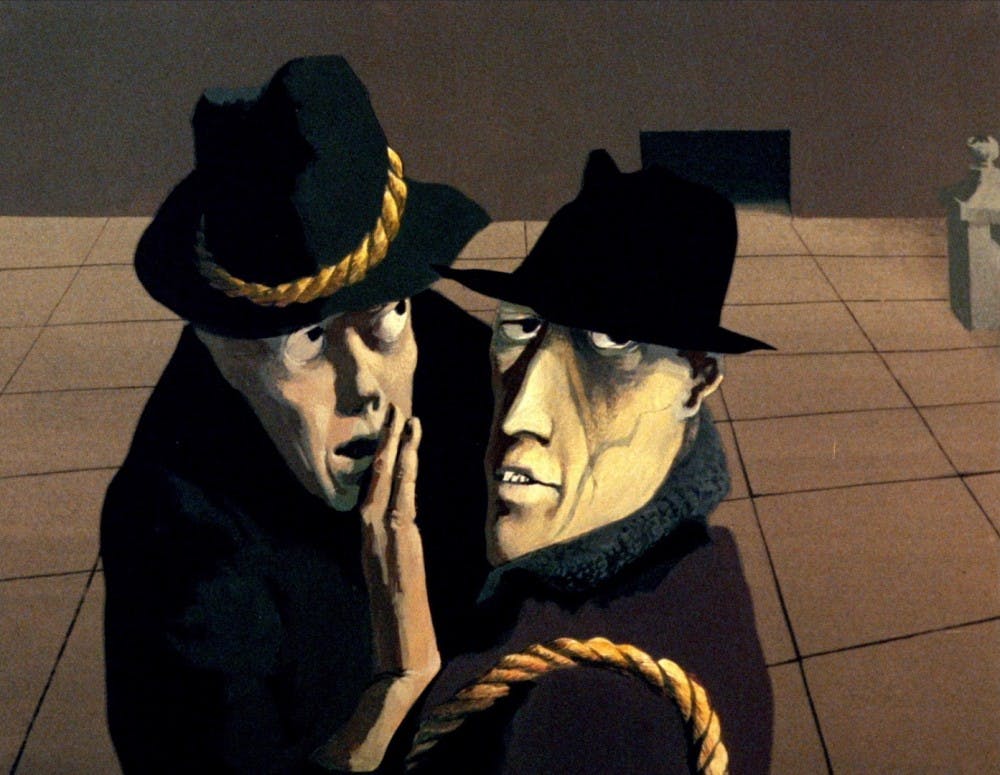Despite the rain, Duke students, faculty members and Durham residents gathered Sunday to see the 19th Annual Animation Show of Shows at the Rubenstein Arts Center. The audience laughed as an anthropomorphic fish in a shower gown lamented about having bad skin in a song and pondered while watching a 1960s film about the ignored voices of minorities.
“We like that animation has the potential to appeal to audience members of all ages, and there is also a great educational value for our film production and animation students in being exposed to a range of well-crafted examples of short-form storytelling,” wrote Hank Okazaki, program coordinator in the Arts of the Moving Image program and one of the organizers of the event, in an email. “We also appreciate that it is an international program, representing filmmakers from a range of different backgrounds and countries.”
Ron Diamond founded the Animation Show of Shows and has been curating it for almost two decades. While distributing short films in the 1980s, Diamond wanted to shed more light on animated short films. He traveled to film festivals and met with emerging directors to discover animations that deserved attention. Diamond then began to ask animation filmmakers for permission to show their films at studios and some colleges in California. As the screenings became increasingly popular – the 16th edition was presented more than 80 times — Diamond became eager to share it with larger audiences.
“I thought to myself, ‘I think there is more out there. I think there are more opportunities,’” Diamond said. “I wanted to give the public the chance to see the show.”
Before being shown at Duke, the 19th edition of the show was presented at almost 60 other universities and included works by artists of more than eight nationalities with diverse techniques. “Everything,” by David O’Reilly, used video game-like perspectives in which viewers follow three-dimensional characters, like a group of black bears or peacocks, to explore diverse virtual landscapes, ranging from a forest to the universe. Meanwhile, in films like “Tiny Big” by Lia Bertels, figures were represented with dots, lines and flat color surfaces.

“Cinematic storytelling is about choosing the right pencil,” Diamond said. “Whatever that pencil may be for the job that you have, whether it is a stop motion film, a 3D film, or a live action film, it is about recognizing what the best way to tell the story is.”
The animators of the films also varied from those with decades of experiences to students at film schools. One of the films, “Next Door,” was created by Pete Docter in 1990s when he was a student at California Institute of the Arts before he became an acclaimed writer and director of films like “Toy Story,” “Up” and “Inside Out.” Meanwhile, a group of six students at a French film school created “Gokurosama,” which follows an old woman and her young assistant working at a restaurant in a department store. While admiring the artistry of works by experienced animators, Diamond also finds student-made films notable for the creativity and the energy that the students put into them.

“I love the idea of presenting young talents,” Diamond said. “One thing we know about animations [is that] … we never know where the next brilliant film is going to come from. It can be from a high school student, someone in their seventies or eighties, and pretty much everywhere in between.”
However, despite the differences in techniques and levels of expertise that their producers had, every film conveyed a strong message. “Hangman,” a short, hand-drawn animation created in the 1960s by Paul Julian and Les Goldman, particularly resonated with the audience. Diamond watched the film as a child, but came across it again as an adult at a film festival, when a film historian talked to him about the necessity to protect it. With a group of animation students, he restored the aged film in seven years and presented it at the show. Despite mostly showing static figures, the narrative, which centered on a hangman who executes weak and innocent villagers, powerfully drew the viewers’ attention to the lost voices within our society and the necessity to stop injustice against them before it is too late.

Meanwhile, films like “Unsatisfied,” by Parallel Studio, shows a series of “unsatisfying” moments such as a download progress bar being stopped at 99 percent and a claw machine failing to pick up a doll. However, even such a seemingly lighthearted film had a message.
“That film goes by really quickly. You get about four seconds to register a joke and enjoy it,” Diamond said. “[But] it makes us wonder why we get so upset about … all of these inconsequential things in life when bigger things are happening around us.”
Get The Chronicle straight to your inbox
Sign up for our weekly newsletter. Cancel at any time.
According to Diamond, most people who work in animation know that animations do not have celebrities, except for two: Walt Disney and Mickey Mouse. Animators tend to accept that producing great films can take up to 10 years (or more) and endeavor to tell compelling visual narratives through creative means, often benefiting from unique advantages that the medium allows.
“The one thing I do very much like about animations is that the audience often suspends their disbelief,” Diamond said. “Things that would be impossible in live action, all of a sudden, not only become believable in animations, but they are [also] welcomed and desired. That kind of freedom is very exciting experience for the filmmaker and the audience.”

